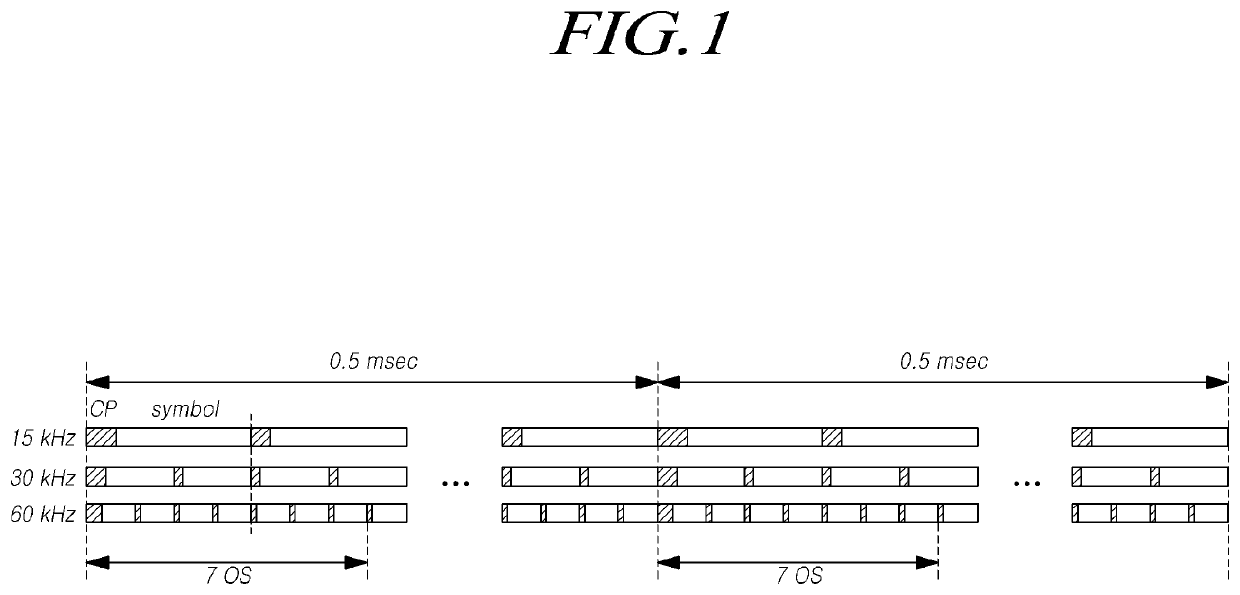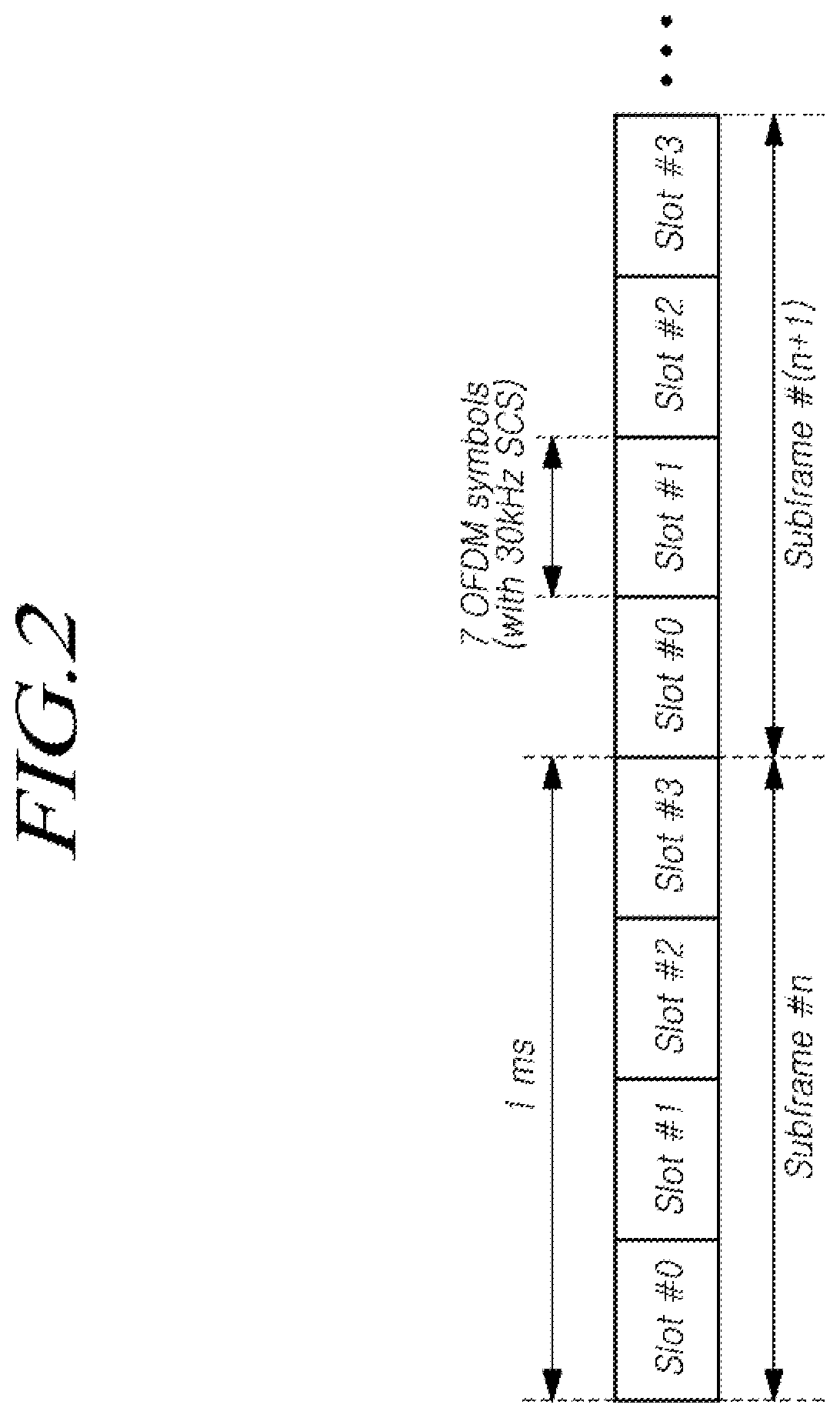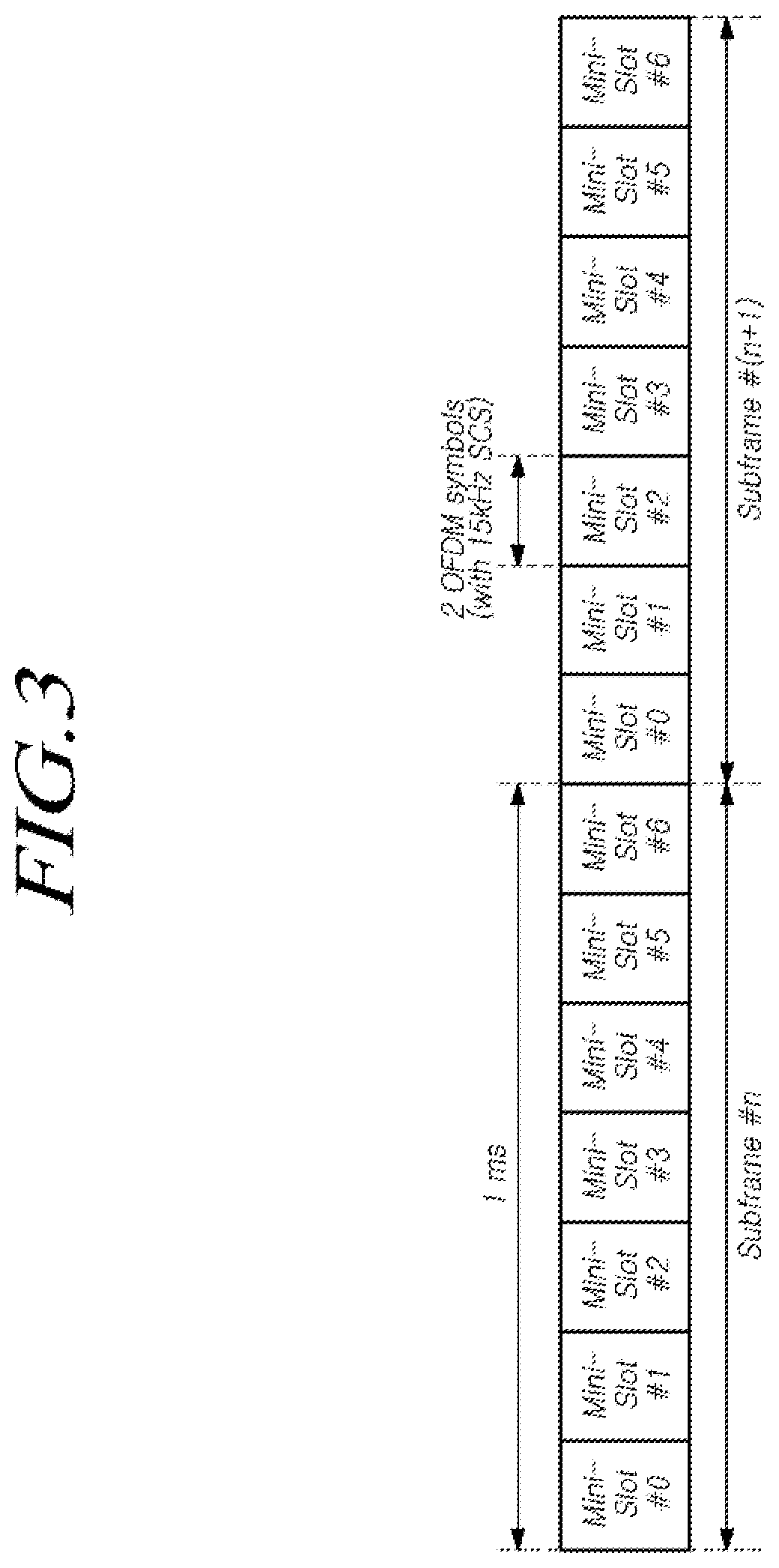Method and device for scheduling uplink signal and downlink data channel in next generation wireless network
a wireless network and data channel technology, applied in the direction of digital transmission, transmission path sub-channel allocation, wireless communication, etc., can solve problems such as ambiguity problems
- Summary
- Abstract
- Description
- Claims
- Application Information
AI Technical Summary
Benefits of technology
Problems solved by technology
Method used
Image
Examples
embodiment 1
[0123] Directly Indicating Index Information
[0124]As a method of configuring timing relationship indication information between CCs each having different slot lengths from another, it is possible to indicate directly timing index information of CCs for performing scheduling. For example, as shown in FIG. 4, in case CA is activated for a plurality of CCs that have different SCSs from one another and corresponding slot lengths for a UE, and cross-carrier scheduling is configured for the UE such that scheduling for a PDSCH or PUSCH of NR CC #2 is performed through NR CC #1, a base station / network may include absolute timing index indication information for PDSCH or PUSCH transmission / reception in the NR CC #2 on scheduling DCI (e.g. DL assignment DCI or UL grant) transmitted through the PDCCH of the NR CC #1, and then transmit the included information to the UE.
[0125]Specifically, the absolute timing index indication information may be configured of slot index indication information or...
embodiment 2
[0126 Timing Gap Information Indication
[0127]As a method of configuring timing relationship indication information by a base station and interpreting it by a UE, timing relationship information may be scheduling DCI and timing gap information between corresponding PDSCH or PUSCH transmission / reception resources.
[0128]In this case, when the timing gap indication information is configured, there is a possibility of ambiguity in setting and interpreting a timing gap depending on a difference in SCS values and corresponding slot lengths of a scheduling CC for PDCCH transmission including scheduling control information and a scheduled CC for corresponding PDSCH or PUSCH transmission.
[0129]For example, as shown in FIG. 4, it is assumed that carrier aggregation (CA) of the NR CC #1 of 15 kHz SCS and the NR CC #2 of 60 kHz SCS are configured in an NR UE. In this case, when a time-domain scheduling unit for each CC is configured for the UE, in case a unit of scheduling is set based on a slot...
embodiment 2.1
[0130 Timing Gap Indication Based on the TTI of a Scheduled CC
[0131]2.1.1 Relationship Between a PDCCH and PDSCH or PUSCH Transmission Corresponding to DCI Included in the PDCCH
[0132]In case CA is configured with NR CCs having TTI or slot lengths each different from another, or cross-carrier scheduling is additionally configured, as another method of configuring timing gap information by a base station and interpreting it by a UE, regardless of TTI or slot lengths depending on SCS values set in NR CCs for PDCCH transmission including scheduling control information, such as, DL assignment DCI or UL grant, for the UE, the timing gap information may be configured by the base station and interpreted by the UE, based on TTI or slot lengths depending on SCS values of NR CCs for PDSCH or PUSCH transmission corresponding to the DCI.
[0133]That is, as shown in FIG. 4, for an NR UE supporting CA configured with the NR CC #1 of 15 kHz SCS and the NR CC #2 of 60 kHz SCS, in case scheduling DCI (...
PUM
 Login to View More
Login to View More Abstract
Description
Claims
Application Information
 Login to View More
Login to View More - R&D
- Intellectual Property
- Life Sciences
- Materials
- Tech Scout
- Unparalleled Data Quality
- Higher Quality Content
- 60% Fewer Hallucinations
Browse by: Latest US Patents, China's latest patents, Technical Efficacy Thesaurus, Application Domain, Technology Topic, Popular Technical Reports.
© 2025 PatSnap. All rights reserved.Legal|Privacy policy|Modern Slavery Act Transparency Statement|Sitemap|About US| Contact US: help@patsnap.com



